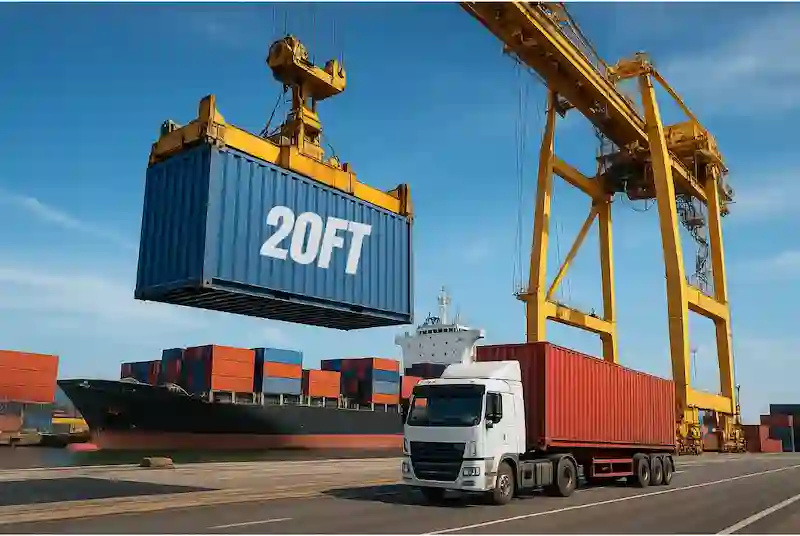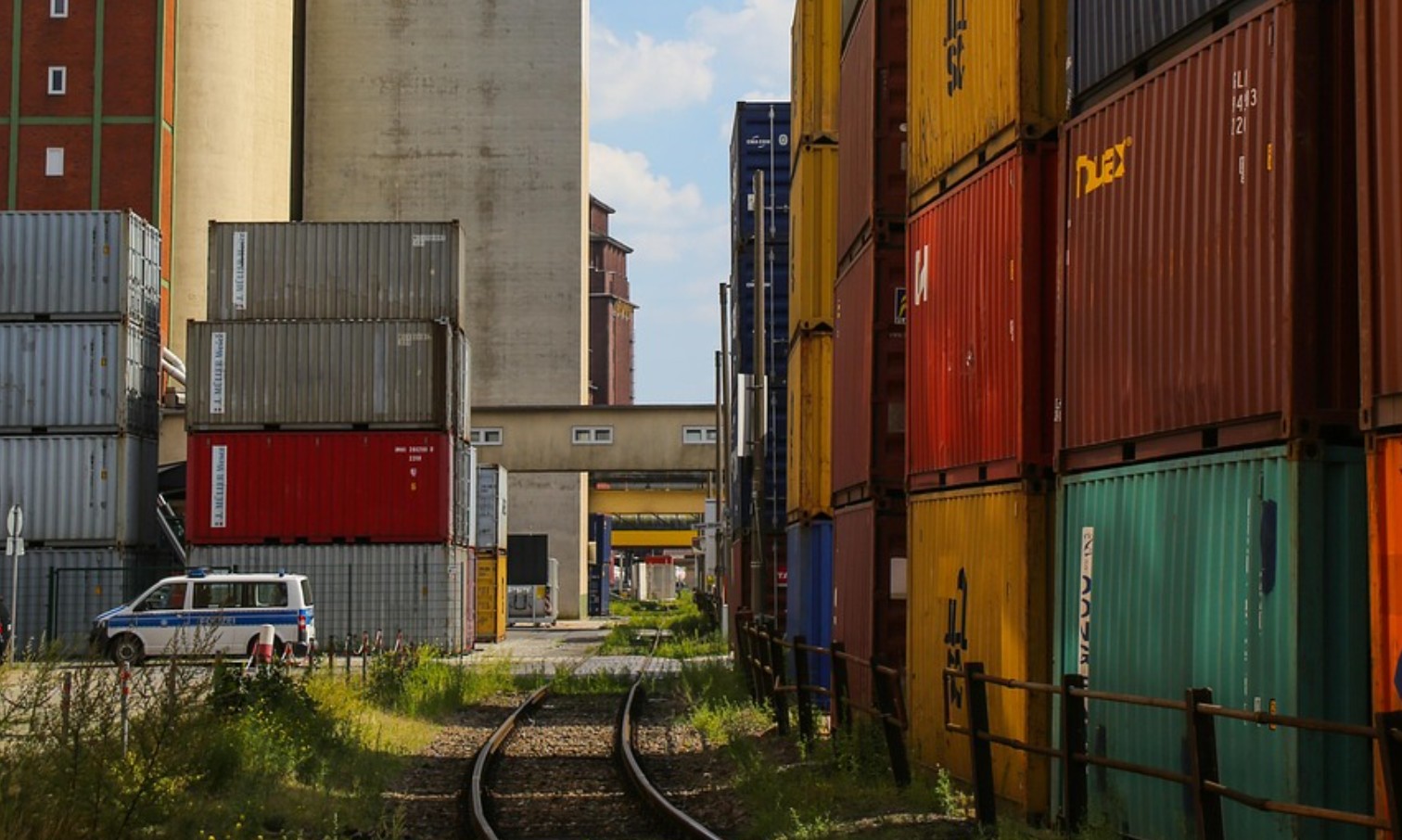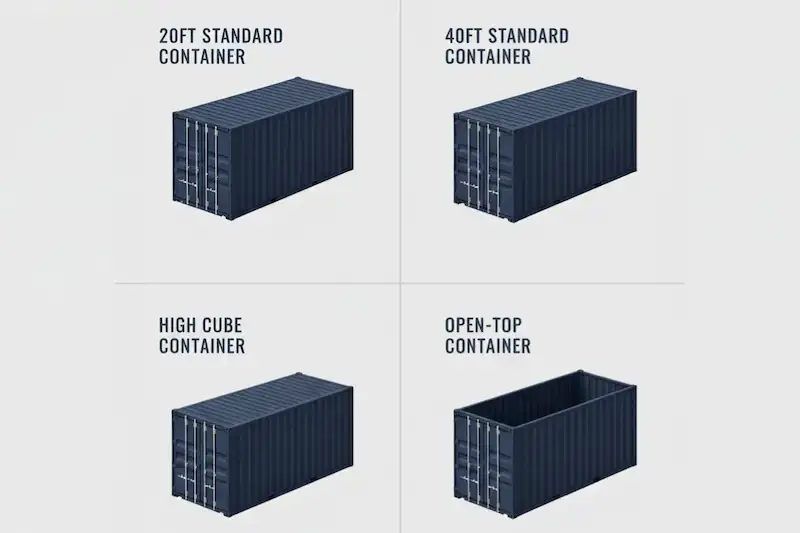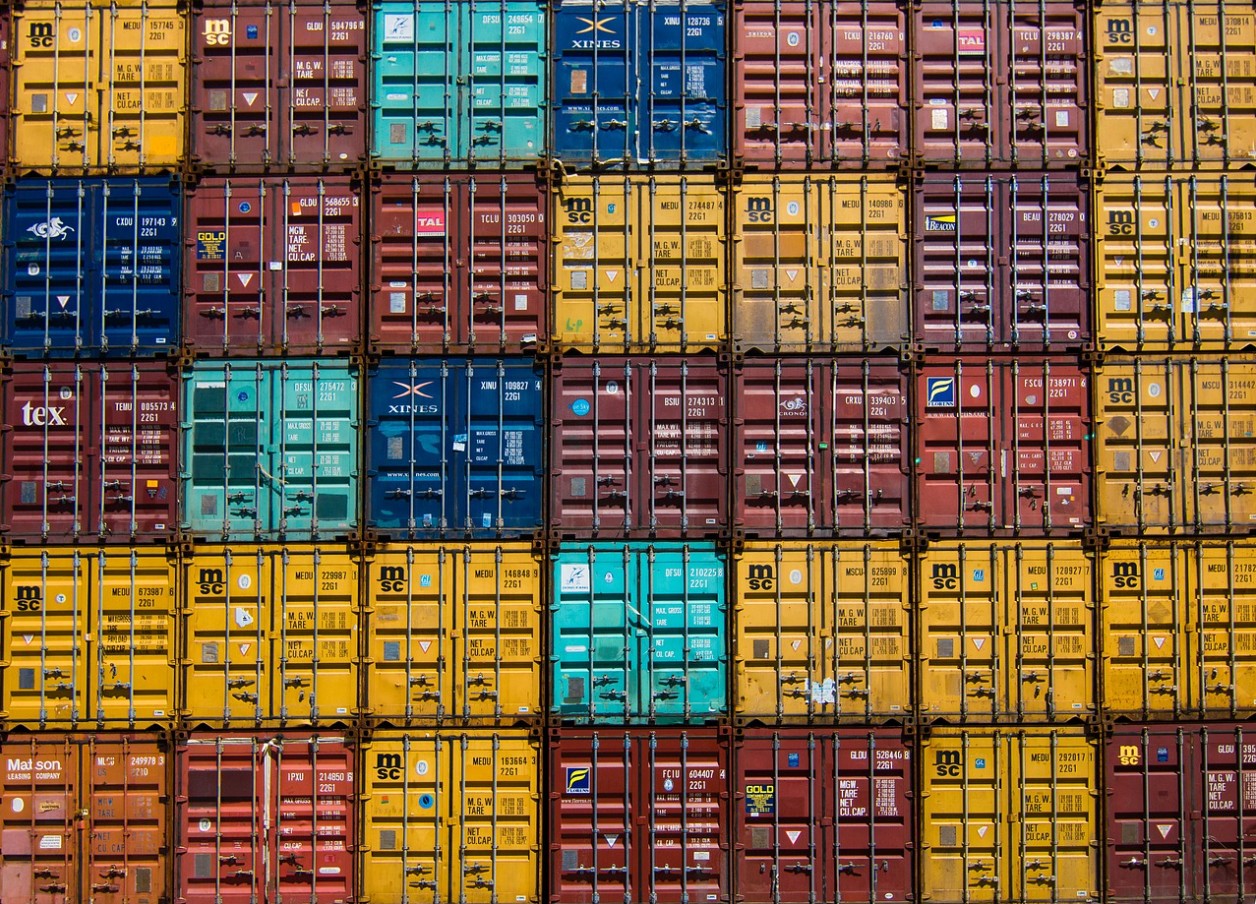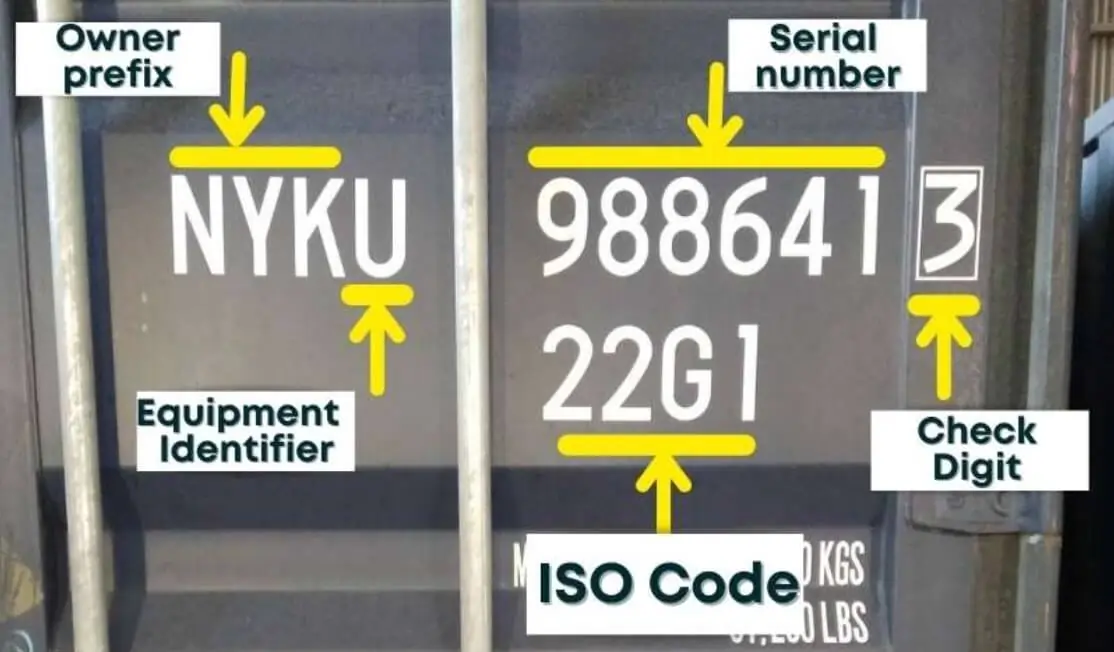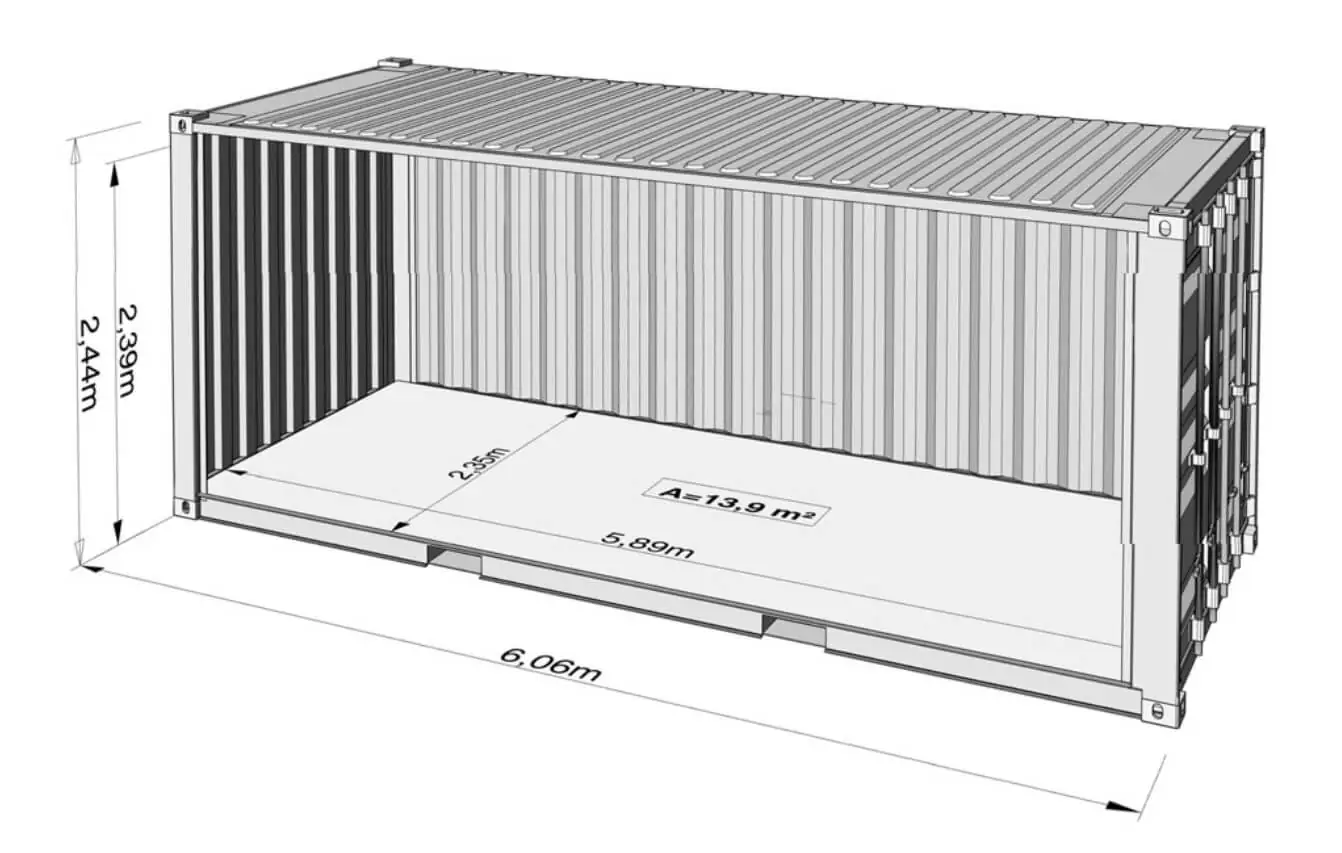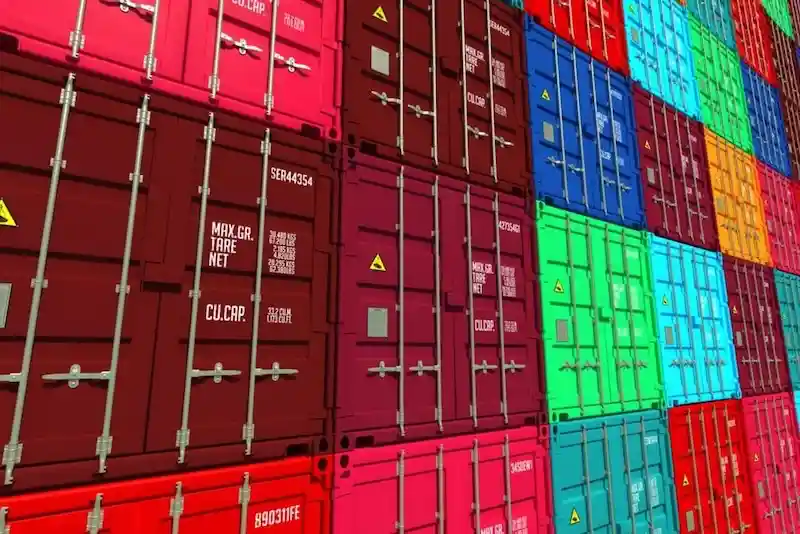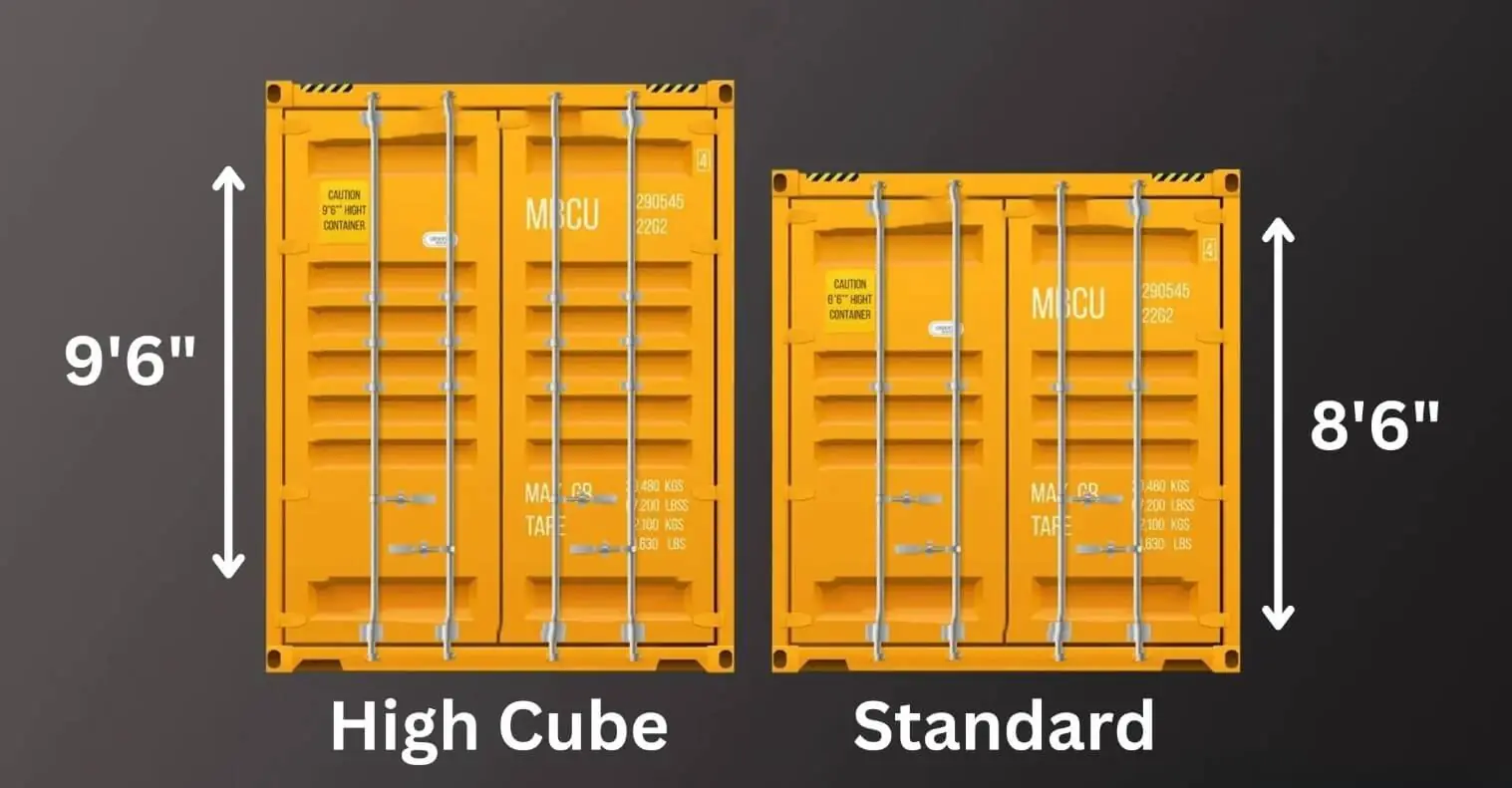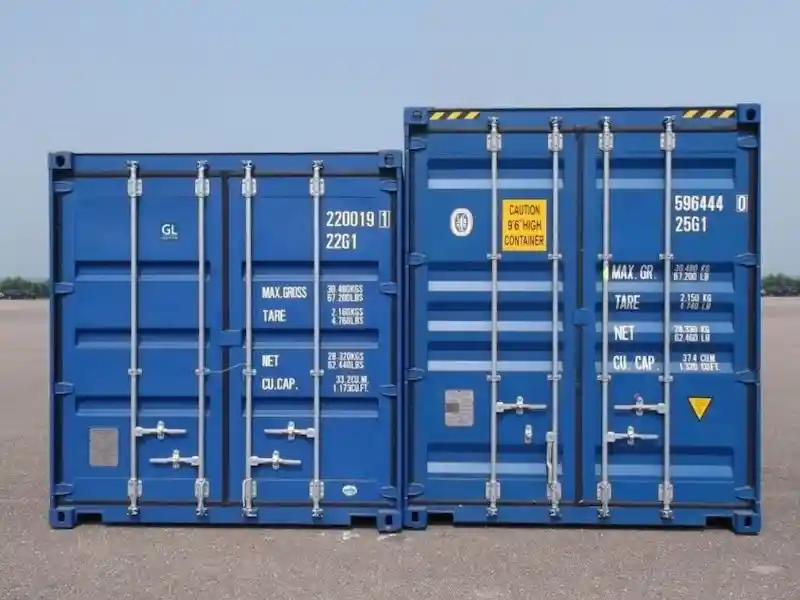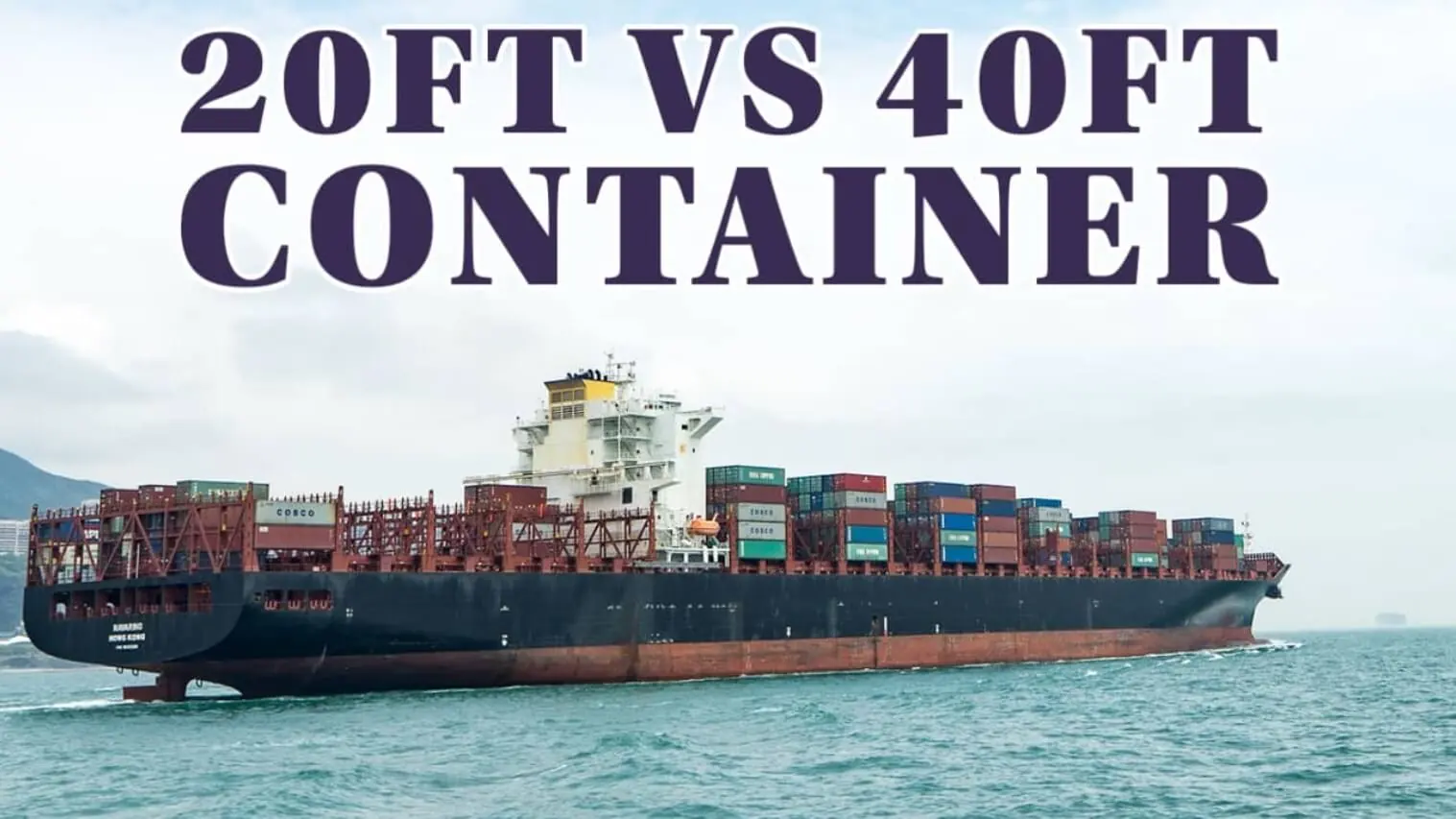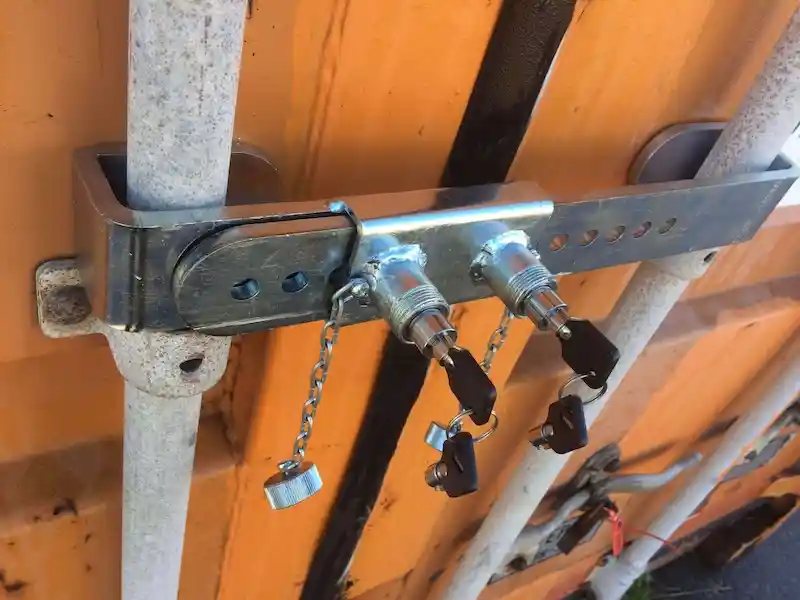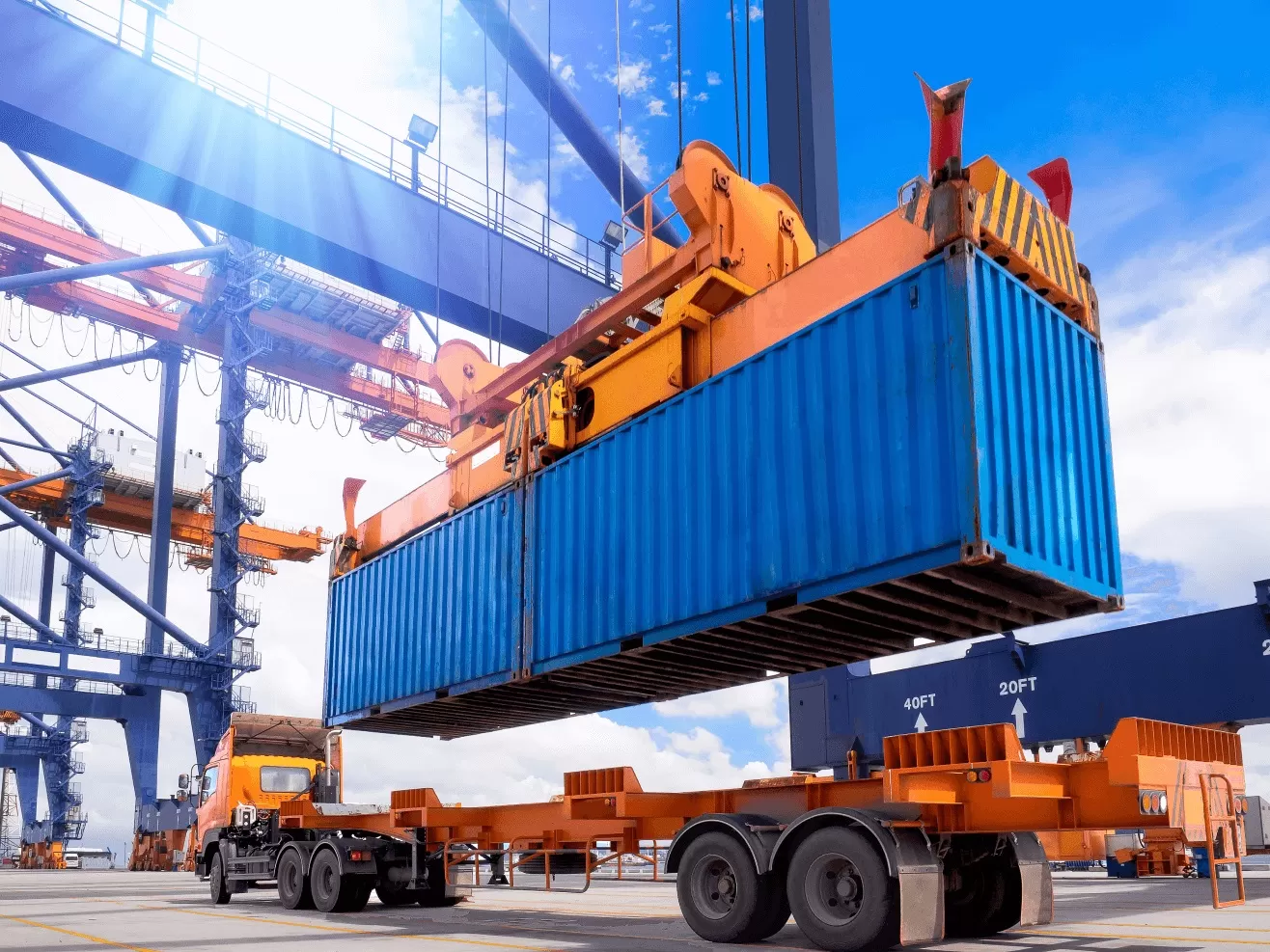Tri-Axle vs Gooseneck Container Chassis: Key Differences and Benefits

When transporting heavy loads and ensuring cargo stability, picking the right container chassis is essential. The two main types you’ll encounter are the tri-axle container chassis and the gooseneck container chassis. Each has its own set of benefits and specific uses.
Understanding its differences can help you choose the most suitable chassis for your specific transportation needs. Whether you’re focusing on maximizing stability for heavy loads or enhancing maneuverability for urban deliveries, selecting the right chassis can lead to more efficient and cost-effective logistics operations.
Tri-axle Container Chassis
A tri-axle container chassis is equipped with three axles, which are essential for distributing the weight of heavy loads more evenly across the chassis. This type of chassis is particularly beneficial when transporting containers that are exceptionally heavy or require additional support to ensure stability during transit.
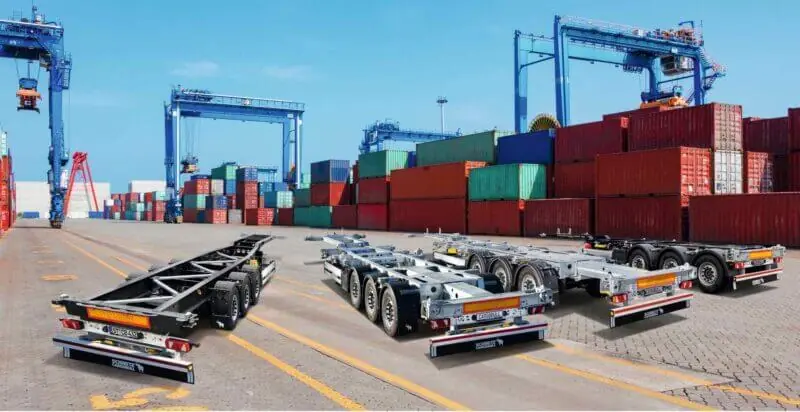
Advantages of Tri-axle Container Chassis
A tri-axle container chassis offers a range of benefits that make it a top choice for moving heavy and oversized loads. Here’s why it stands out:
- Increased Stability. The tri-axle design ensures greater stability on the road. With three sets of wheels distributing the weight more evenly, the chassis minimizes swaying and maintains a smoother ride, which is crucial for preserving cargo integrity.
- Higher Weight Capacity. The additional axle allows the tri-axle chassis to carry more weight compared to single or tandem-axle models. This makes it ideal for transporting heavy containers and oversized cargo, improving efficiency and reducing the need for multiple trips.
- Enhanced Load Distribution. By spreading the load across three axles, the tri-axle chassis reduces stress on any single point, which can extend the lifespan of both the chassis and its tires. This even distribution also improves handling and reduces the risk of overloading specific sections of the chassis.
- Reduced Wear and Tear. The tri-axle design helps distribute the weight more evenly, leading to less strain on each axle and reduced wear and tear on the chassis components. This can lower maintenance costs and extend the lifespan of the equipment.
- Efficiency in Long-Distance Hauls. Designed to handle the rigors of long-haul transportation, the tri-axle chassis is built to endure extended journeys. Its durability and strength make it suitable for cross-country and long-distance freight operations.
Tri-axle chassis are adaptable to various types of cargo and are widely used across different industries. Whether transporting standard containers or specialized equipment, the tri-axle chassis offers the flexibility needed for diverse logistics operations.
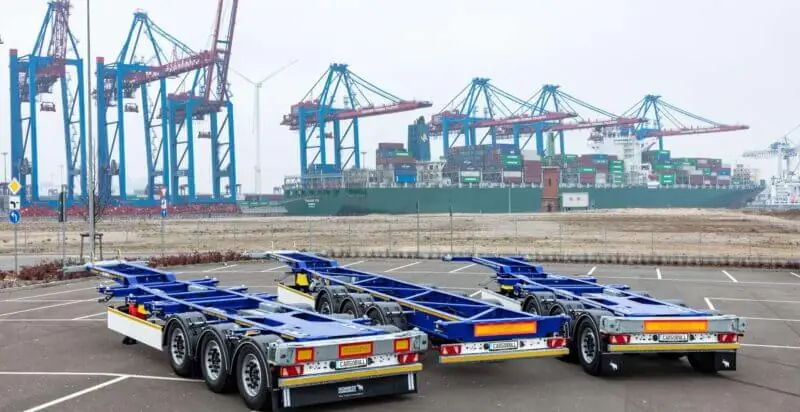
Advantages of Gooseneck Container Chassis
The gooseneck container chassis offers several standout benefits that make it a valuable choice for various transport needs. Here’s why it might be the right fit for you:
- Better Maneuverability. The gooseneck’s unique design, with its long, curved hitch extending over the truck’s cab, allows for much tighter turns. This makes navigating narrow streets or tight loading docks much easier.
- Improved Visibility. With the hitch extending over the cab, drivers have a clearer view of the road and surroundings. This helps reduce blind spots and makes it easier to spot potential obstacles, enhancing overall safety.
- Easier Loading and Unloading. The gooseneck design simplifies the process of aligning with container handling equipment. This flexibility can make loading and unloading more efficient, saving time and effort.
- Convenient Hook-Up. Attaching and detaching the trailer is generally easier with a gooseneck setup. This streamlined process can save time and make operations smoother.
- Compact Design. The gooseneck design often results in a shorter overall trailer length. This can be advantageous in areas with limited space or for operations requiring a more compact setup.
The gooseneck chassis is adaptable for various types of cargo and industries. Its design is great for frequent maneuvering and can handle different container types and sizes.
Choosing the Right Chassis for Your Needs. Container Chassis Differences
Selecting between a tri-axle and a gooseneck container chassis depends on several factors, including the type of cargo, the distance of transportation, and specific logistical requirements. You should consider all the container chassis advantages. Here’s a brief container chassis comparison to help in making an informed decision:
- Type of Cargo. If transporting exceptionally heavy or oversized containers, a tri-axle container chassis may be the better choice due to its enhanced stability and weight distribution capabilities.
- Transportation Distance. For long-distance transportation, a gooseneck container chassis might be more suitable because of its fuel efficiency and better handling on various road conditions.
- Cost Considerations. While both are cost-effective container chassis, a tri-axle chassis might incur higher initial costs due to its robust construction. However, its longevity and reduced maintenance needs can offset these costs over time. Conversely, the gooseneck chassis’s fuel efficiency can lead to significant savings on long-haul routes.
- Route Restrictions. Consider the route’s height restrictions. A gooseneck chassis provides better height clearance, making it more adaptable to routes with tunnels and low bridges.

In the debate of tri-axle vs. gooseneck container chassis, the right choice depends on your specific needs and logistical constraints. Both types offer distinct advantages, with tri-axle container chassis excelling in heavy load transportation and cargo stability, while gooseneck container chassis stand out for their lower center of gravity, height clearance, and fuel efficiency. By carefully evaluating your cargo type, transportation distance, and cost considerations, you can select the most suitable container chassis to optimize your logistics operations.
Vanessa is a dedicated writer and content enthusiast at Pelican Containers. With a background in practical writing and a keen eye for clarity, she transforms complex container topics into easy-to-understand and useful content. Her passion lies in exploring the evolving world of container usage — from smart storage hacks to global logistics trends.
When she's not writing, Vanessa loves discovering creative shipping container projects or traveling to find new inspiration.
Explore thoughtful, informative, and accessible content with Vanessa!
Vanessa is a dedicated writer and content enthusiast at Pelican Containers. With a background in practical writing and a keen eye for clarity, she transforms complex container topics into easy-to-understand and useful content. Her passion lies in exploring the evolving world of container usage — from smart storage hacks to global logistics trends.
When she's not writing, Vanessa loves discovering creative shipping container projects or traveling to find new inspiration.
Explore thoughtful, informative, and accessible content with Vanessa!
FAQ
What are the main differences between a tri-axle and a gooseneck container chassis?
The main differences lie in their design and functionality. A tri-axle container chassis has three axles for better weight distribution and stability, ideal for heavy loads. A gooseneck container chassis has a dipped front design for a lower center of gravity and better height clearance, making it suitable for routes with height restrictions and long-distance transportation.
How does a tri-axle container chassis enhance cargo stability compared to a gooseneck container chassis?
A tri-axle container chassis enhances cargo stability by evenly distributing the load across three axles, reducing the risk of tipping and shifting during transit. This is particularly beneficial for transporting heavy or oversized containers.
What are the key advantages of using a gooseneck container chassis for heavy loads?
The key advantages of using a gooseneck container chassis for heavy loads include a lower center of gravity, which improves stability, better height clearance for restricted routes, and potentially better fuel efficiency due to its aerodynamic design.
Which type of container chassis is more cost-effective for long-distance transportation?
A gooseneck container chassis is generally more cost-effective for long-distance transportation due to its fuel efficiency and better handling on varied road conditions. However, a tri-axle container chassis might offer long-term savings through reduced maintenance and extended durability.
